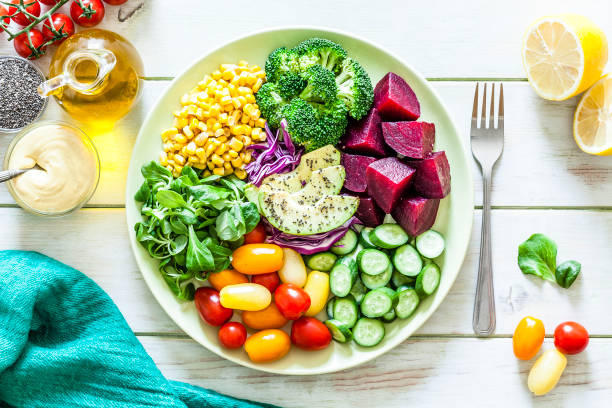
Why Eating More Colorful Foods Can Boost Your Health
Share
When it comes to maintaining a healthy diet, we often focus on counting calories or sticking to certain food groups. But one of the most effective ways to improve your health might be as simple as adding more color to your meals. Vibrantly colored fruits and vegetables are packed with essential nutrients, antioxidants, and phytochemicals that not only make your plate more visually appealing but also offer powerful health benefits. Eating a rainbow of foods can help boost your immune system, protect your heart, enhance digestion, and even improve your skin health. Here’s why you should make colorful foods a priority in your diet.
Each color in fruits and vegetables represents a unique set of nutrients that are vital to different aspects of your health. For example, orange and yellow foods like carrots, sweet potatoes, and squash are rich in beta-carotene, which is converted to vitamin A in the body. Vitamin A plays a critical role in maintaining healthy vision, supporting the immune system, and promoting skin health. Green vegetables like spinach, kale, and broccoli, on the other hand, are packed with folate, iron, and chlorophyll. These nutrients help boost energy levels, improve blood circulation, and support overall vitality.
Eating a variety of colorful foods can also provide your body with a wealth of antioxidants, compounds that help fight oxidative stress and protect your cells from damage caused by free radicals. Foods that are blue or purple, such as blueberries, purple cabbage, and eggplant, contain anthocyanins, powerful antioxidants that have been shown to reduce inflammation and improve heart health. These antioxidants can also help slow down the aging process, keeping both your skin and internal organs functioning at their best for longer.
In addition to their antioxidant properties, many colorful foods are loaded with vitamins and minerals that help strengthen your immune system. For instance, red foods like tomatoes, bell peppers, and strawberries are rich in vitamin C, an essential nutrient that supports immune function and helps the body fight off infections. Vitamin C is also critical for collagen production, which is vital for healthy skin and wound healing. A well-balanced immune system is key to preventing illness and staying healthy, making these vibrant foods an important part of your diet.
Another significant benefit of colorful foods is their high fiber content, which promotes healthy digestion. Foods like apples, beets, and broccoli are excellent sources of dietary fiber that help keep your digestive system running smoothly. Fiber aids in regulating bowel movements, preventing constipation, and supporting the growth of beneficial gut bacteria. A healthy gut not only aids digestion but also plays a vital role in your overall well-being, affecting everything from your immune system to your mood.
The antioxidants and vitamins found in colorful foods also support skin health. Carotenoids, found in orange and yellow vegetables like peppers, pumpkins, and apricots, have been shown to protect the skin from sun damage and prevent premature aging. These nutrients help maintain a youthful, glowing complexion and reduce the appearance of fine lines and wrinkles. Eating a variety of colorful produce provides your skin with the nutrients it needs to repair itself and stay radiant.
Incorporating more colorful foods into your diet is a simple yet effective way to enhance your health and well-being. These foods offer a rich array of vitamins, minerals, antioxidants, and fiber that work together to support your immune system, improve digestion, promote healthy skin, and reduce the risk of chronic diseases. So next time you plan your meals, think about adding a variety of colors to your plate. Not only will your meals be more beautiful, but your body will thank you for the nourishment and protection these colorful foods provide.
Get more knowledge about eating healthy, please refer to The Mediterranean Diet for Beginners.
